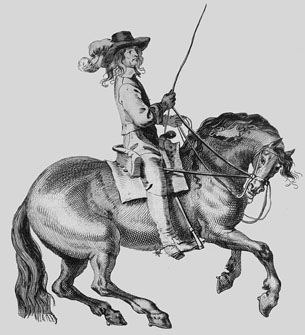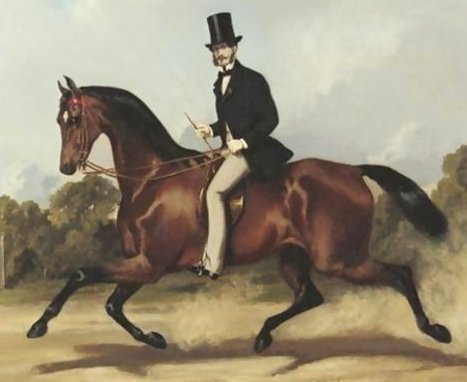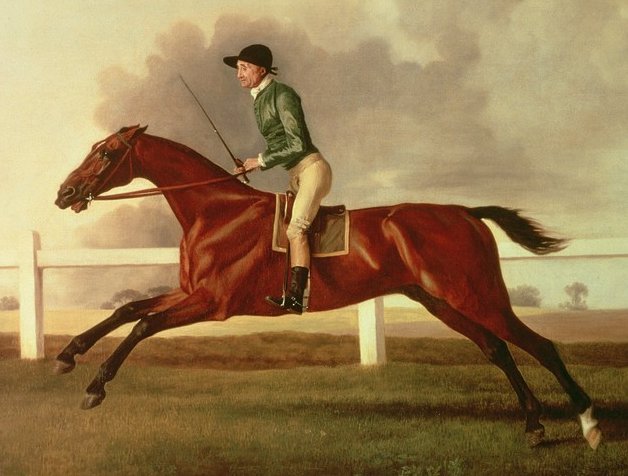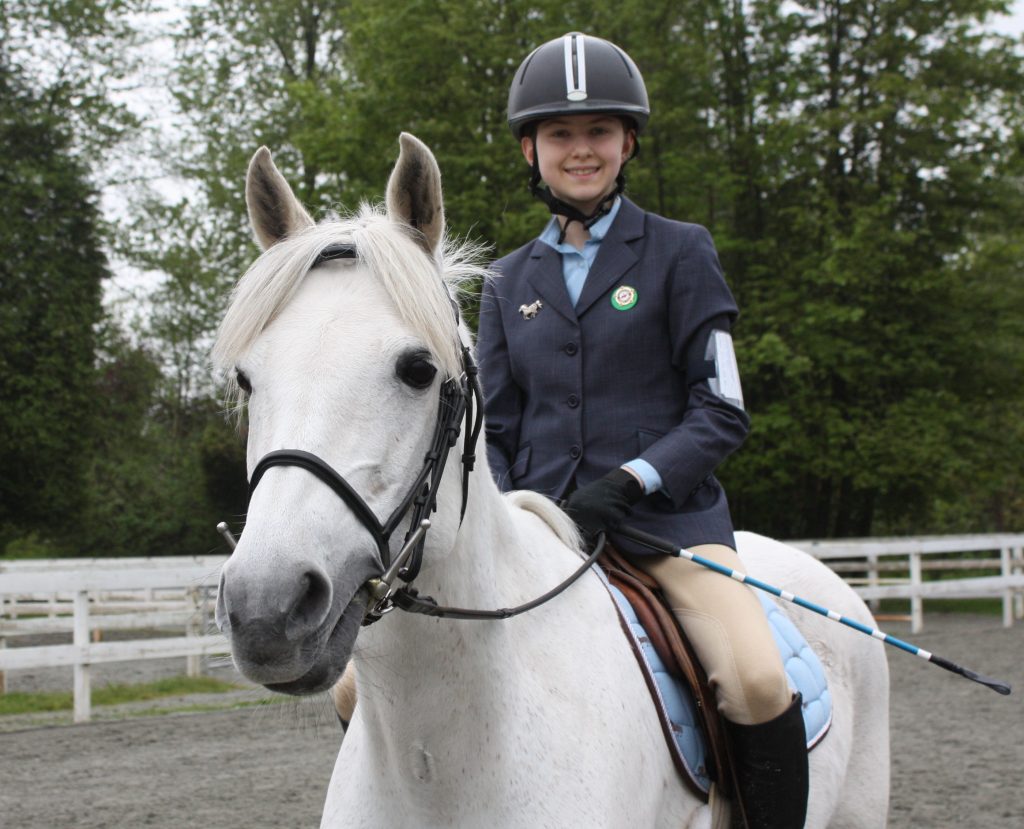I had to be careful with the title of this week's post. Didn't want it turning up in the wrong sort of searches,* as the next item on the Riding 1 checklist is:
|
This is one of the skills we ask for in our level 1 that doesn't turn up until higher levels for Pony Club or Equine Canada tests. However, since our goal is to ride with a sword or spear in hand, we figure it's a good idea to get the basics of handling objects from the saddle early on.
A whip or crop, often just called a 'stick', is one of the two artificial aids. (Spurs is the other, but you won't be donning those at level 1). It can be thought of as a supplement to your leg, to make the horse go faster, move the hindquarters or shoulder, or as a correction to a disobedience.
In the latter case it must be used immediately, as a quick reminder and no more. Never use the stick in anger or to punish your horse. He will quickly become either deaf to it or so frightened you will no longer be able to use it as a schooling aid.
How to hold a whip
Up until the 19th century most images show riders holding whips pointing upward as in the ones above and below from the 18th and 17th centuries. This is similar to the way in which a sword is held, and is good preparation for mounted combat. It is useful on occasion for a slow or stubborn horse. When you strike the hindquarters with the whip held this way the blow is stronger, falls more on the rump than the flank, and is prone to generate a burst of speed ... but perhaps also a buck or two if the horse is not used to it.
In 19th century paintings we begin to see whips being held in what is now a more familiar position to us, pointing downward and resting against the rider's thigh. If the previous position was akin to a sword, this is more like a dagger in the 'icepick' grip.
This keeps the business end out of the horse's view until needed, and it is very easy to deploy just behind the rider's leg in a swift movement. Sensitive horses may respond well to the rider simply tapping her boot or the saddle pad, rather than making contact with the flank.
In this position the whip sits behind the rein in the rider's hand, and the rider's thumb rests on top of the whip handle. She controls the angle of the whip on her thigh with her thumb and little finger.
To use the whip, quickly place your reins in one hand, tap behind the leg, and return your reins to both hands. In most cases you will want to carry your whip in whichever hand is on the inside of the circle or arena to keep a horse from cutting in. Likewise, if a horse tends to veer away from a jump to one side, put the whip in that hand.
A horse that drops his shoulder and leans into circles can be tapped on the shoulder instead of behind the leg without switching to one hand, and a whip in the 'sword' position can be waved to get a horse moving without tapping it. But in general whips work best on the back half of the horse.
Practise switching your whip from hand to hand, either by lifting and placing the end on the other side of the horse's shoulders, or by flipping it upside down to transfer to the other hand (this works well for longer dressage whips). Also practise switching from the sword grip to the regular position. If you can flip your whip in hand, deliver a correction and return to regular riding position in the space of a few canter strides, not only are you a more effective rider, you've got a head start on handling a sword from horseback.
Raise the Roof Update
We finished the framing last weekend, thanks to Monica, Kirsten, Blake, Misty, Courtney, Roland, Chris, Isabel and Eleanor who lent their time and effort! Now we just need to get the roof panels up. We haven't set a date for this, but will keep you posted!

